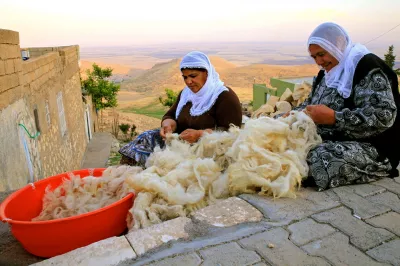Turkish Banks at the Forefront of MSME Lending, but Gaps Remain
In Turkey almost all businesses are micro, small or medium-sized enterprises (MSME), and only 0.1 percent of businesses are large firms, according to the Turkey Agency for Statistics. MSME lending constitutes a significant share of banks’ lending – it was 26% of the total banks’ portfolio in 2013, including 7% extended to microenterprises, despite the naturally much smaller average loan amounts, according to the data of the Turkish Central Bank. Last summer Stefan Staschen and I conducted background research in Turkey to inform The World Bank’s work on a forthcoming Financial Inclusion Landscape report about the state of financial inclusion in Turkey. We found there are several barriers preventing Turkish banks from increasing their lending to microenterprises, despite an interest in reaching further down market.

Photo credit: Bulent Suberk/2014 CGAP Photo Contest
One such barrier is the high level of informality and semi-formality in the micro-segment of the Turkish MSME sector. In the opinion of the Union of Chambers and Commodity Exchanges of Turkey (in which all registered businesses are required to be members), semi-formal registered microbusinesses may not be recording up to 50% of their financial activities in their accounting. This prevents banks from fully meeting their real needs for loan capital, and prevents semi-formal businesses from providing adequate loan collateral. Banks are not allowed to provide enterprise loans at all to informal, unregistered businesses, though they can still extend consumer loans to them (that are then used for business purposes by these unregistered entrepreneurs). However, there are regulations in place establishing limits on banks’ consumer lending.
Even despite these challenges, there are banks lending to MSMEs. For example, 60% of Şekerbank’s total loan portfolio is extended to MSMEs. Halk Bank served1.2 million MSMEs in 2013 - about 46% of all registered enterprises. ING Bank conducts customer behavior research to better understand the needs of the lower-income and unbanked. With amendments to regulations – for example, either relaxing business registration requirements or allowing banks to provide enterprise loans to semi-formal or informal businesses – Turkey can, perhaps, expect a boost in MSME lending. The main prerequisite for this lending, a bank’s commitment to responding to MSME demand, is already present, but logistics get in the way.
In many countries in Eastern and Central Europe that have lending gaps in the banking sectors (such as Azerbaijan or Bosnia and Herzegovina, for example), specialized microfinance institutions pursue MSME lending and serve the niche businesses not addressed by the banks. But even with its highly developed banking sector, Turkey has no dedicated microfinance sector of a significant scale. There are only two relatively small institutions – Turkey Grameen Microfinance Program and Maya. While both can reach semi-formal and informal entrepreneurs – something that many banks cannot yet do, their business models may be difficult to scale up, and they can hardly compete with the giant banks.
Olga Tomilova is CGAP’s Regional representative for Eastern Europe and Central Asia based in Moscow, Russia.



Add new comment